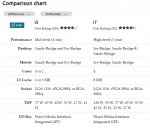It's possibly even more complicated than that. What holds for Haswell (and earlier) with DDR3 doesn't necessarily apply to Skylake and DDR4. We have to remember that mainstream DDR4 only kicked off with Skylake's launch, since before then it was pretty much limited to the still expensive X99 chipset Haswell-E.
I built my first Skylake i7-6700k system early on, and I could only get X99 era DDR4, going for G.Skill Ripjaws 4 4x4GB 3333 (about £200 at the time, including two ram cooling fan assemblies). On compute intensive tasks I was seeing tens of percent improvement in performance compared to running the same ram at 2133, but I had ram errors at full speed, requiring a lower overclock. Long story short, I replaced it with Ripjaws 5 3200 2x8GB (just over £100), which is made "for" Skylake, and that worked fine right away.
To play with the old ram I now had spare (too late to return, not worth selling on), I built a 2nd Skylake using the cheaper i5-6600k. Long story short, I was unable to see the same performance as the i7 even with ram running close to the same speed.
My take away point is still, if you can get faster ram for not a lot extra over standard ram, might as well.
As for PCIe lanes, I haven't looked below Z170 for Skylake yet, but the Z170 is adequate up to dual GPU. If you really need more lanes e.g. for more than 2 GPUs, you're back to X99 and Haswell-E, at least until Broadwell-E is due out next year some time (same chipset).

